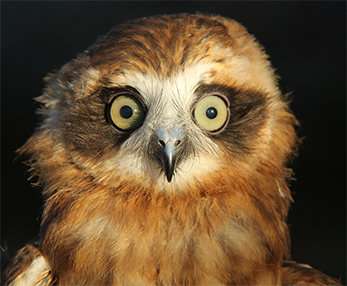Aussie owls fall foul of rat poisons

Lethal toxins from commercial rat poisons (rodenticides) have been found in more than 70 per cent of Australia's smallest and most common owl species, the Southern Boobook (Ninox novaeseelandiae).
PhD candidate Michael Lohr of Edith Cowan University's Centre for Ecosystem Management said the problem is linked to Australian use of poisons restricted in many other countries.
"Rodenticides such as the commonly-used Brodifacoum are anti-coagulants that are very strong and chemically stable, having a half-life of 200 days," Mr Lohr said.
"This means that when an owl or other predator consumes a rat or mouse that has fed on bait, they are consuming toxins that will stay in their system for a long time.
"The more they consume, the higher the toxic load in their liver, until they reach a fatal dose."
Half-life refers to the amount of time it takes for an animal to rid half of the toxin from its body.
While Mr Lohr's research is focussed on boobook owls, secondary poisoning also affects other animals, including cats, hawks and eagles.
Measuring between 23 and 36cm – about the length of an average dinner plate – the feisty boobook can be found in almost all Australian landscapes, including in and around urban areas.
While this adaptability has increased its resilience in the face of habitat loss, it has also brought many into contact with human activities, including rat baiting.
"The first-generation version of anti-coagulant rodenticides weren't as damaging to secondary predators, as they only had a half-life of 16 days," Mr Lohr said.
"However, due to resistance, much stronger versions have been developed that are more chemically stable and last longer in the system."
Second-generation rodenticides also kills rats with a single ingestion, which increases the impact on secondary predators.
The poisons work by blocking a rodent's ability to produce vitamin K, however the animals have up to seven days of reserves in their bodies, which means they can keep feeding on bait, upping their toxicity.
The amount of time between ingestion and death also results in the rodents acting abnormally, including venturing out during the day, increasing the chances they will be attacked and eaten.
Mr Lohr's work will help inform a review of second-generation pesticides in Australia.
ECU has recently switched from Brodifacoum to Cholecalciferol, or activated vitamin D3, which has a half-life of only a few weeks and is less dangerous to secondary predators.
Provided by Edith Cowan University
















